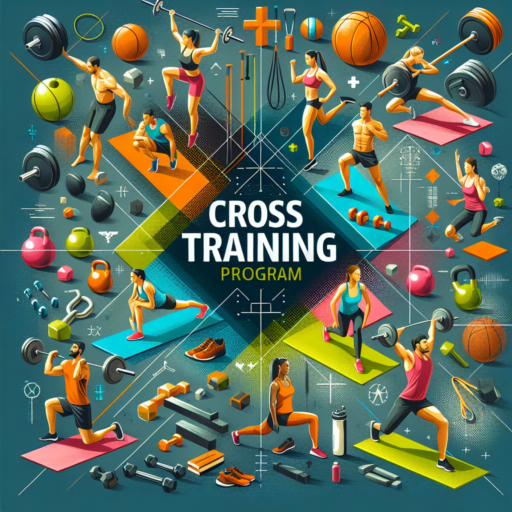What is an example of cross-training?
Cross-training refers to the process of engaging in multiple types of exercise or training methodologies to improve overall fitness, prevent injuries, and keep workouts interesting and challenging. One popular example of cross-training involves combining cardiovascular activities, strength training, and flexibility exercises into a single workout regime. This holistic approach ensures that different muscle groups are targeted, and varied intensity levels are incorporated, promoting balanced muscle development and reducing the risk of overuse injuries.
An illustrative case of cross-training could be a runner who incorporates swimming and cycling into their routine. Running is a high-impact activity that strengthens the legs and improves cardiovascular endurance. By adding low-impact swimming sessions, the runner can continue to build endurance while giving their joints a break from the constant pounding of running. Integrating cycling further diversifies the routine, focusing on different leg muscles and enhancing overall lower body strength and endurance. This combination exemplifies how cross-training can create a well-rounded fitness routine.
Additionally, incorporating strength training exercises such as weight lifting or bodyweight resistance exercises is another excellent cross-training example. For instance, someone focused primarily on yoga, known for improving flexibility and core strength, might add weight lifting sessions to build muscle and increase metabolic rate. This blend of flexibility and strength training ensures a comprehensive approach to fitness, targeting various aspects of physical health.
How many times a week should runners cross train?
The optimal frequency for runners to engage in cross-training activities varies depending on individual goals, fitness levels, and running schedules. However, incorporating 2 to 3 sessions of cross training per week can offer a balanced approach for both novice and experienced runners. This routine helps in preventing injuries, enhancing overall fitness, and breaking the monotony of running.
Different types of cross-training, such as swimming, cycling, or strength training, can complement running by improving cardiovascular endurance, strength, and flexibility. For those aiming to increase their running performance, focusing on activities that enhance cardiovascular health and muscle endurance is crucial. Incorporating activities like yoga or Pilates can also aid in flexibility and core strength, further contributing to a runner’s performance and injury prevention.
It’s essential to listen to your body and adjust the frequency of cross-training sessions as needed. Some runners might require more cross-training sessions to improve weak areas or recover from an injury, while others might find that one to two sessions are sufficient. Balancing running with other forms of exercise ensures a well-rounded fitness regimen, promoting longevity in the sport while minimizing the risk of injury.
What is cross-training day after long run?
Cross-training the day after a long run has become a popular approach among runners looking to enhance their overall fitness, recover effectively, and minimize the risk of overuse injuries. Typically, cross-training refers to incorporating alternative forms of exercise to supplement running, thereby engaging different muscle groups and promoting balanced muscle development. This practice is especially beneficial following a long run, as it allows runners to continue their training regimen without placing additional strain on their recovering leg muscles.
Diverse Cross-Training Options
There are several options for cross-training that can be particularly effective the day after a long run. These include low-impact activities such as swimming, cycling, and yoga. Each of these activities targets different muscle groups and offers varying benefits:
- Swimming – Enhances cardiovascular health without the pounding of high-impact running.
- Cycling – Builds strength in the lower body while offering a cardiovascular workout with minimal joint stress.
- Yoga – Improves flexibility, balance, and core strength, all of which are vital for runners aiming to improve their performance and prevent injuries.
Integrating cross-training into your routine the day after a long run not only aids in physical recovery but also mentally refreshes you, keeping your training dynamic and enjoyable. By engaging in different physical activities, runners can avoid the monotony that sometimes comes with repetitive training schedules, making their overall training plan more sustainable and enjoyable in the long term.
No se han encontrado productos.
Is a cross trainer as good as running?
When considering cardiovascular workouts, the debate between using a cross trainer versus traditional running is a prevalent one among fitness enthusiasts. Assessing the effectiveness of each exercise method involves examining various factors like calorie burn, impact on joints, and overall cardiovascular benefits.
Impact on Joints
One of the significant advantages of a cross trainer is its low impact on the joints. Unlike running, which can be hard on the knees and ankles due to repeated impact with the ground, cross trainers provide a smooth motion that mimics running without the harsh impact. This aspect makes cross trainers an ideal choice for individuals with joint issues or those recovering from injuries.
Calorie Burn and Cardiovascular Benefits
When it comes to burning calories and improving cardiovascular health, both running and using a cross trainer can be effective. However, the intensity of the workout plays a crucial role. Running, especially at a high intensity or uphill, can burn a significant amount of calories. On the other hand, cross trainers allow for the engagement of a broader range of muscles, including arms and legs, potentially leading to a comprehensive workout with balanced muscle engagement.




